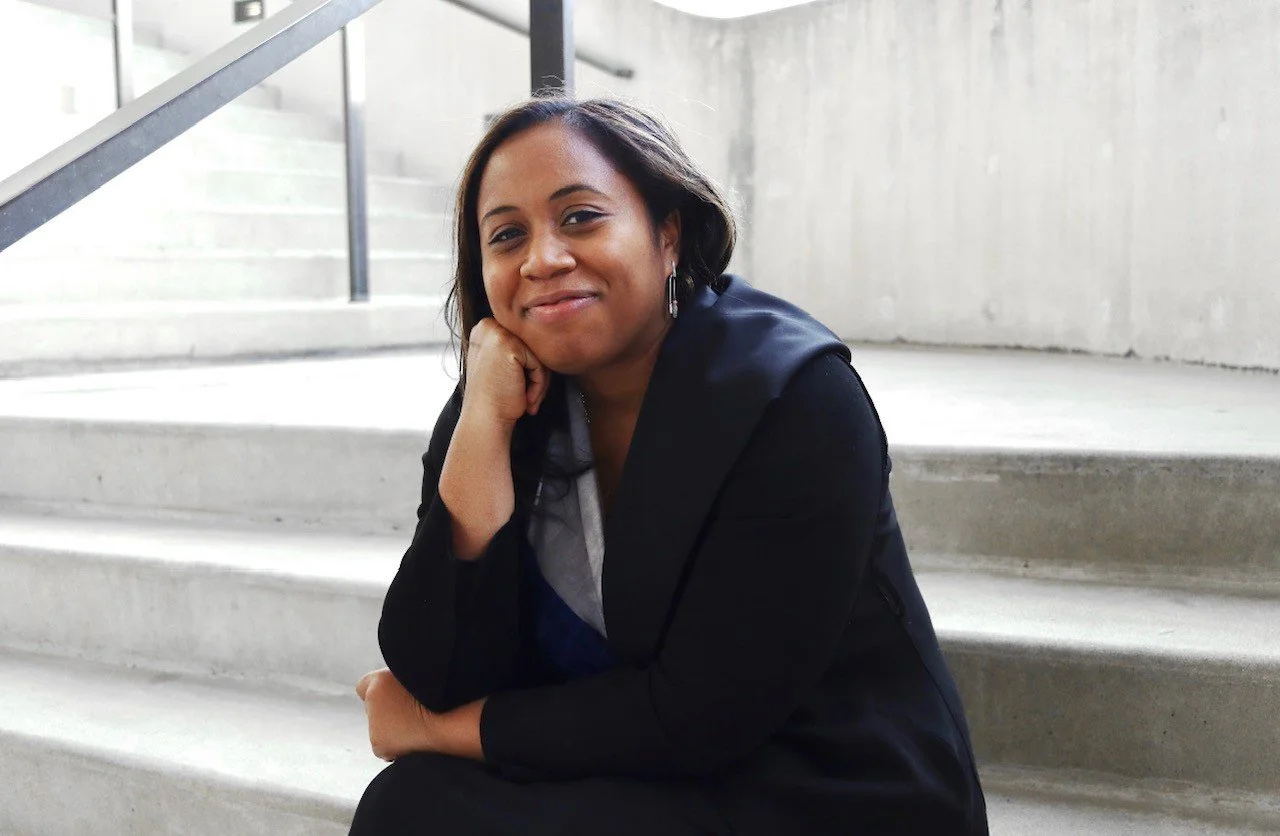Mae-ling Lokko
Mae-ling Lokko is an architectural scientist, designer and educator from Ghana and the Philippines who works with agrowaste and renewable biobased materials. Through her work, Lokko explores themes of “generative justice” through the development of new models of distributed production and collaboration.
Lokko is an Assistant Professor at Yale University’s School of Architecture (YSoA) . Her research at Yale’s Center for Ecosystems in Architecture focuses on ecological design, integrated material life cycle design and the broad development and evaluation of renewable biobased materials. Her practice Willow Technologies, Ltd. based in Accra, Ghana that upcycles agrowaste into affordable biobased building materials and for water quality treatment applications. Her work was nominated for the Visible Award 2019, Royal Academy Dorfman Award 2020 and she was a finalist for the Hublot Design Prize 2019.
Lokko’s recent works have been exhibited at major museums globally including the Museum of Modern Art, New York; Stedelijk Museum, Netherlands; Museum of the Future, Dubai; Z33 House for Contemporary Art, Design and Architecture, Belgium; Triennale Milano, Italy, Somerset House, London, Nobel Prize Museum, Stockholm; and the Luma Foundation, Arles. Her work has been featured in ICON Magazine, Blueprint, Wallpaper, MOLD Magazine, Frieze Magazine, RIBA Journal, DOMUS, DAMN Magazine and other global design publications.
I first met Sherman when I was a sophomore and joined the second class of Synaptic Scholars at Tufts University. Sherm created and inspired a rich, vibrant community to pursue their passions in unconventional ways, through connections inside and outside the school and through a range of friendships. I found a community of sorts there at the time.
Sherman has remained the kind of life long mentor I have always been grateful to have, unwavering in his support and fascination and bravery (and inspiring bravery in others) in all the ways that count. And I’m so grateful for spirit of intellectual diversity that grew during my years in Sherm’s orbit.
As Mae-ling indicated, I met her first as a young, yet having already lived in Africa, Asia, Europe, the Middle East, and the United States, a worldly sophisticated sophomore at Tufts. I had initiated Synaptic Scholars the year before with the blessings of then President Larry Bacow and my Provost Jamshed Bharuch. They were very encouraging of the effort to give meaning to interdisciplinary and multidisciplinary inquiry, terms that I found both intriguing and yet often described in a very manner. I thought the best way to exemplify the concept would be to find and encourage students whose intellectual thirst could not be slacked by majoring and minoring in the usual manner.
I chose the first cohort of intriguing students and gave them the mandate to experiment “at the margins,” a space that Larry described as a fulcrum of the most interesting ideas, and what Jamshed termed the “frontiers of knowledge.” I helped the first class tap the second class, witnessing the interviews, consulting with the students, empowered with the full freedom to choose their cohort.
Mae-ling was an overwhelming, unanimous choice. She thoughtfully embraced intellectual intricacy and understood the nuances of self-identity. She was a precious avatar of the vision I had. She was thoroughly passionate about architecture and especially was fascinated by traditional and vernacular Asian and African design. Her involvement in Synaptics allowed her to concentrate on reviving a landscape design program in her Ghanaian boarding school that she termed "The Uzuri Project" (named after the Swahili word for beauty.)
In her being and action, Mae-ling exemplified the complexity of hybridity and cosmopolitanism. With confidence, grace and strength, she understood how to embrace her identity, transcend boundaries and borders, and navigate and embrace multiple cultural worlds and communities. President of the Tufts African Students Organization, Mae-ling was also active with the Asian-American Society, Tufts' Emerging Black Leadership Symposium, and the University's multiracial organization Loving drama and performance arts, she was active in both Tufts Irish Dance Club and the Filipino Cultural Society. Her concerns for humanity transcended Tufts and she was active in the organization Emergency, centered on quality health care for victims of poverty and war.
It was clear to me that Mae-ling was happiest with a tangible, visceral engagement with creation. I remember her design plans to redo the landscaping and installations of the wide expanse of Tufts Capen House’s grounds. I knew she was destined for a distinctive distinguished career, one fusing theory and practice, that already her trajectory at Yale and beyond speaks to.
Anyone familiar with Mae-ling’s work would find it distinctly strikingly eclectic, path-breaking and precedent-setting. Mae-ling is insightful, thoughtful and fearless. She robustly embodies the word innovation. Her work is breathtaking and the essence of the concept of sustainability. Her intellect is matched by a joyous, humane buoyancy, immediately evident in the warmth and radiance of her personality. I happily remember her trenchent commentaries and thoughtful academic presentations, marked by verve, enthusiasm and often unchecked excitement. When people say of a person, they "light up a room," it is Mae-ling they are talking about.

